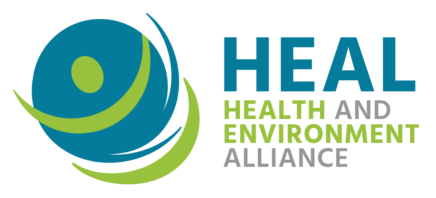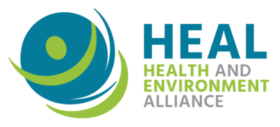HEAL welcomes the call from 250 scientists urging the European Commission to follow scientific recommendations and include provisions to account for the effects of chemical mixtures to better protect health in the upcoming revision of REACH, the EU’s regulation for chemicals.
HEAL welcomes the addition of nine new substances to the candidate list of substances of very high concern (SVHC) under the REACH regulation. This poses immediate obligations on manufacturers and importers to declare if these substances are present in materials or products. During the SVHC consulting period HEAL provided technical input to proposals from Belgium, Germany, the Netherlands, Denmark, Norway, Spain, and Sweden to add bisphenol S (BPS), melamine, isobutylparaben, PFHpA (a degradation product of other PFAS), among others to REACH’s so-called blacklist.
While the names of these chemicals might be daunting to pronounce, what is more concerning is their potential irreversible and adverse effect on our health and environment (as detailed below). With the addition to the candidate list, however, these chemicals are on their way to being regulated to prevent regrettable substitution and further harm.
Here is a list of the culprits and their associated harmful health and environmental impacts:
- 4,4′-sulphonyldiphenol (Bisphenol S; BPS) was determined to have probable serious effects on human health and the environment due to endocrine properties based on Belgium’s proposal. See HEAL’s technical input.
- Melamine was determined to have probable serious effects on human health and the environment based on Germany’s proposal. See HEAL’s technical input.
- Perfluoroheptanoic Acid and its salts (PFHpA) was determined to be toxic for reproduction, persistent bioaccumulative and toxic (PBT) and very persistent very bioaccumulative (vPvB) properties, and probable serious effects to human health and the environment based on the Netherland’s proposal. See HEAL’s technical input.
- Isobutyl 4-hydroxybenzoate (isobutylparaben) was determined to have probable serious effects on human health due to endocrine properties based on Denmark’s proposal. See HEAL’s technical input.
- 2,2′,6,6′-tetrabromo-4,4′-isopropylidenediphenol (tetrabromobisphenol-A; TBBPA) was classified as a carcinogen category 1B. This decision was adopted in 2021 by the European Chemical Agencies’ risk assessment committee based on Norway’s proposal.
- 1,1′-[ethane-1,2-diylbisoxy]bis[2,4,6-tribromobenzene] was determined to be very persistent and very bioaccumulative (vPvB) in the environment based on Spain’s proposal.
- Bis(2-ethylhexyl) tetrabromophthalate covering any of the individual isomers and/or combinations thereof was determined to be very persistent and very bioaccumulative (vPvB) in the environment based on Sweden’s proposal.
- Barium diboron tetraoxide was determined to be toxic for reproduction based on Sweden’s proposal.
- reaction mass of 2,2,3,3,5,5,6,6-octafluoro-4-(1,1,1,2,3,3,3-heptafluoropropan-2-yl)morpholine and 2,2,3,3,5,5,6,6-octafluoro-4-(heptafluoropropyl)morpholine was determined to be very persistent and very bioaccumulative (vPvB) in the environment based on Belgium’s proposal.
Baby steps in the right direction
HEAL supports ECHA’s efforts to speed up this SVHC identification process through the inclusion of all nine proposed chemicals on the candidate list at once. A Candidate listing is the first step towards the phase out and safe substitution of hazardous substances under REACH, triggering the start of the authorisation process. Moving forward, companies are now obligated to provide additional information to authorities and consumers including safety data, communication on safe use, respond within 45 days to consumer inquiries, and provide information on quantities of substances of very high concern used in products.
Unfortunately, these chemicals currently remain on the EU market and are found in numerous products, the environment, and even our bodies. However, with their entry onto the candidate list, future regrettable substitution can be avoided. Such is the case now with BPS, which has been used in lieu of BPA in such products as baby bottles and paper receipts. The placement of BPS and the other eight chemicals on the blacklist helps to deter industry from further harmful substitution, but more efforts are needed to ensure these substances are no longer used.
While this is a move in the right direction to better protect human health and the environment, the authorisation process is a long and winding regulatory road. The next step is to determine which chemicals’ inclusion in the list is a priority, so that any company that wants to keep using them after the phase out date has to prepare an application for authorisation. At the authorisation stage, loopholes involving unjustified derogations, incomplete information about safe alternatives, and long delays present opportunities for industry to take advantage of the system, weakening the authorisation process and keeping hazardous substances on the market.
Aiming for a more health-focused REACH
Since the establishment of REACH in 2007, out of the approximately 100,000 chemicals currently on the EU market only 233 have been identified as SVHC and placed on the candidate list. Of those 233 substances, only 59 are currently on the authorisation list – meaning only these 59 SVHC have been prioritised for being phased out, requiring companies to submit an authorisation application for specific uses after the phase out date. This is just a drop in the ocean in terms of the very lengthy, slow process for regulating thousands of hazardous chemicals on the EU market. As the European Environmental Bureau’s recent report highlights, this is only the tip of the iceberg with little to no data on hazards or uses for around 75% of chemicals currently on the EU market.
The snail’s pace of REACH and the many loopholes in the process have left many chemicals used on a daily basis both poorly understood and unregulated. This is why the blacklisting / SVHC listing of well-known and widely used harmful substances like BPS, melamine, PFHpA, and isobutylparaben is an important step in the right direction for a health-focused implementation of REACH.
The candidate list is one of the cornerstones of REACH, a key to achieving safe substitution in the long run. Under a reformed system, the authorisation process needs to be maintained and strengthened. HEAL supports the important initiatives promised under the Chemical Strategy for Sustainability (CSS) and will continue to promote legislative upgrades towards a more efficient, speedy, and protective revision of REACH.
You can learn more about HEAL’s advocacy and our key demands to strengthen REACH on our new campaign page.


